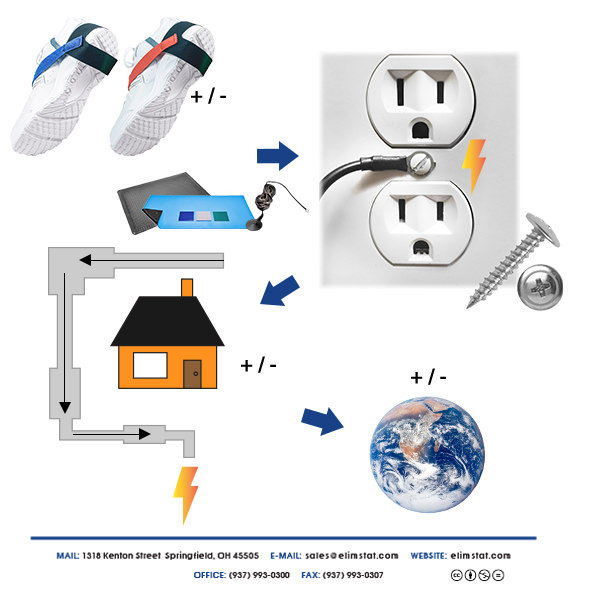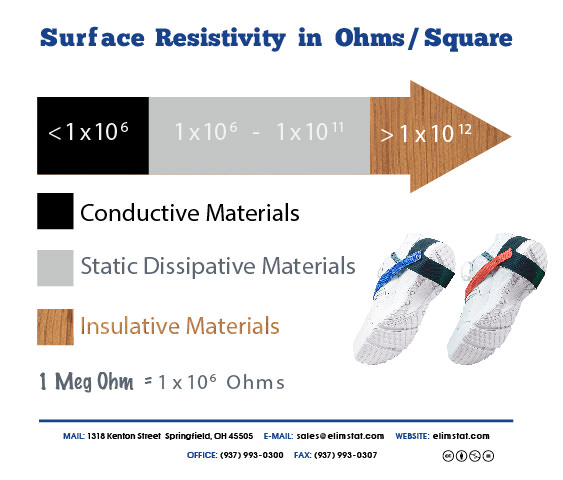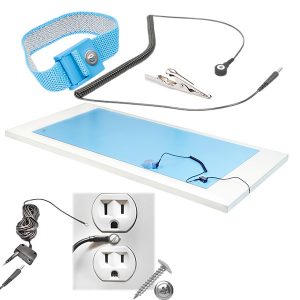Prices
| Product | Qty 1-9 | Qty 10-99 | Qty 100+ |
|---|---|---|---|
| HGC-SV1 | $2.98 USD | $2.86 USD | $2.60 USD |
| HGC-SV1-O | $6.38 USD | $5.56 USD | $5.10 USD |
• Stretch Velcro Closure stretches to tighten the fit onto your shoe.
• Available in Blue or Orange for easy identification of being worn or not.
| Product | Qty 1-9 | Qty 10-99 | Qty 100+ |
|---|---|---|---|
| HGC-SV1 | $2.98 USD | $2.86 USD | $2.60 USD |
| HGC-SV1-O | $6.38 USD | $5.56 USD | $5.10 USD |
| Dimension | Specification |
|---|---|
| Heel Cup Ground Contact | Surface Resistivity is 104 to 106 Ohms |
| Heel Cup Material | Reinforced Black Carbon Loaded Rubber |
| Skin Ground Contact | Knitted Ribbon with Silver Conductive Monofilament attached to the Heel Cup is tucked into sock |
| Resistor | 1 Meg Ohm Resistor is Sewn into Silver Knitted Ribbon |
| Ankle Adjustment | Stretch Velcro Blue and Orange Straps |
| Charge Decay | 5000 volts to zero in less than 2 seconds |
Heel Grounders are a specific type of shoe grounder that use a conductive black carbon rubber heel to ground the shoe.
Materials like wood and wool are also insulating. Walking up and down a wool carpet with tennis shoes can easily cause us to hold static on our skin and clothes.
When we go to handle electronics we want to make sure we are not electrically isolated, but instead electrically bonded (also known as “being grounded”). This allows those static electrons to discharge from our clothes and skin to the ground beneath our feet. Wearing a heel grounder connected to an electrically bonded floor or floor mat is a common way to “ground” large assembly lines.

The bonded surface can be a coated floor, an anti static mat roll laid out as “floor runner”, or a workstation floor mat.

Connected to the tire-grade rubber heel is a conductive silver thread that tucks into your sock. The thread draws static electricity from your skin’s surface so that it grounds you and the shoe as one unit.
The way this works is that as the heel grounders make contact with electrically bonded surfaces (mats or floors) the electricity that was static on your shoes and skin is dissipated- literally falls into the Earth under the force of gravity.
1 Meg Ohm = 1 x 106 Ohms

Made with a 1 Meg Ohm Resistor sewn into it, the silver knitted ribbon slows down an electrostatic discharge event (ESD) from a highly charged ungrounded surface from discharging instantaneously through the ribbon.
Typically a 1 Meg Ohm Resistor slows down an electrostatic discharge (ESD) a few more milliseconds than if it were not present.


